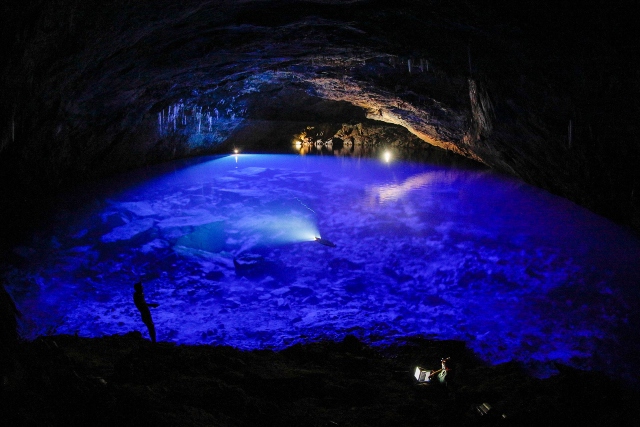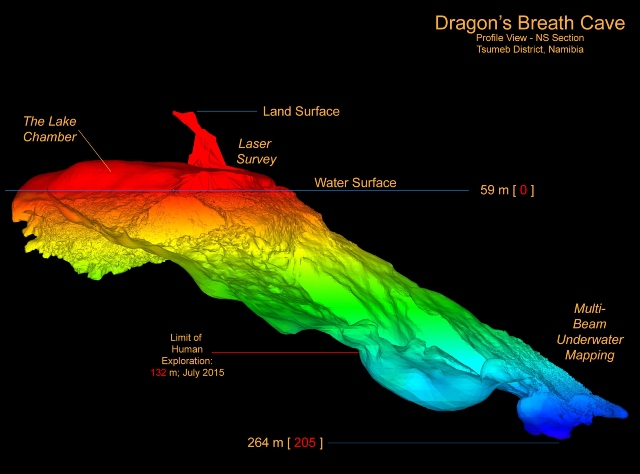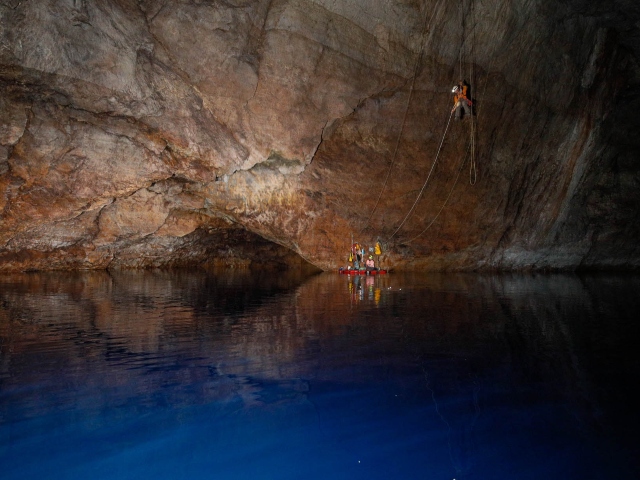[imagesource:Stoneaerospace]
Most of us don’t even know this, but underneath the barren landscape of Namibia, lies the biggest non-subglacial underground lake on the planet. Called the Dragon’s Breath Cave because of the gusts of warm air that escape from its mouth, the mysterious underground cavern has always been a challenge for explorers due to its depth, as well as the simple fact that it’s a massive lake under the earth. But just as space is opening up to humanity thanks to technology, so too are some of the earth’s hidden wonders.
The true size of this body of water was not known for decades as explorers could only dive so far, but recent technological advances have forced the cavern to give up some of its ancient secrets.
Recent surveys have however uncovered a surprising number of secrets within the cave. By making use of autonomous underwater vehicles, scientists have managed to update their measurements of the lake’s depth, as well as look at some of the strange creatures living there. Light is almost absent from the cave except for parts close to its narrow entrance. The water however is incredibly clear and robotic vehicles allow researchers to have a clear look at the bizarre ecosystems that seem to thrive here.

[imagesource:stoneaerospace]
Dragon’s Breath Cave is only one of the 124 underground cave systems that can be found in Namibia and is in stark contrast to the empty landscape above. The name Namibia comes from the local Nama word “Namib,” which means a vast and empty place. But not so underground.
The first documented instances of people exploring the cavern emerged in the 1980s. As per the book “The Darkness Beckons” by Martyn Farr, one of the first attempts to formally explore the cave was by a team of divers and cavers from the South African Speleological Association in 1986.
At the time it was believed that the lake was 150m deep, but recent robotic surveys revealed a depth of 264m. That’s 264m underground, in the dark, and surrounded by strange creatures such as golden catfish, an oddly beautiful and critically endangered species of airbreathing catfish. Nope, not for me.
Using laser and sonar mapping equipment, the researchers were also able to get a good idea of what the cave system looks like:

[imagesource:stoneaerospace]
To dive a little deeper into the amazing yet terrifying depths below Namibia, watch the below video of the expedition to get to the literal bottom of this mysterious hole:
[sources:stoneaerospace&ifls]





